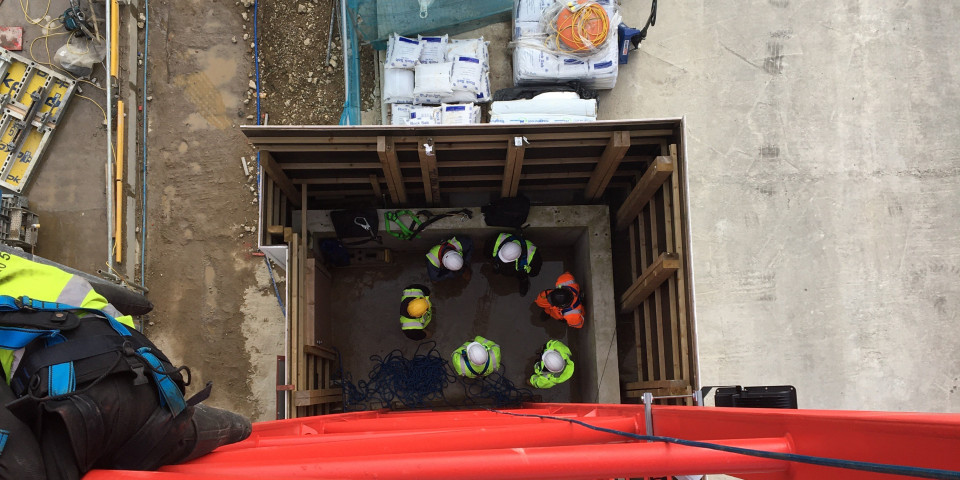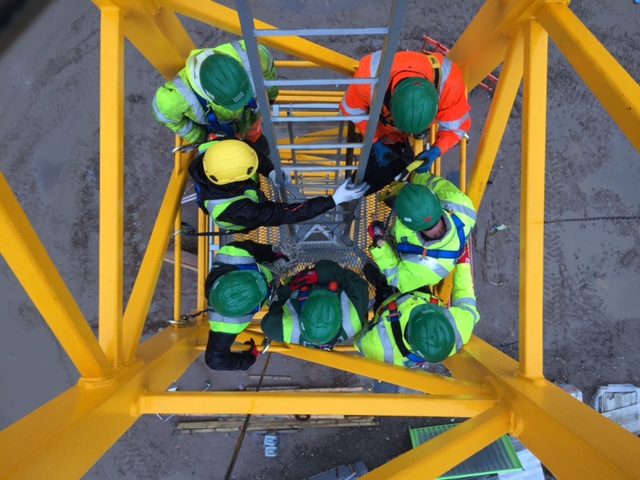Latest News
ESS Guide to Working at Height
Posted on Monday, 11th December 2023

Working at height is one of the most dangerous areas of work in any sector or industry. If work involves performing tasks above ground level, employers need to be certain that the appropriate training, equipment, and procedures are in place to protect the safety of their workers. In today’s blog, we present a simple guide to working at height, and break down the training options available with ESS.
What is working at height?
Working at height is a broad term used to describe anyone who works above ground level as part of their daily responsibilities. This can include everything from working with ladders and scaffolding, to the use of more advanced equipment such as powered access machinery.
Accidents while performing work at height make up a huge proportion of injuries and deaths in construction. Figures from RIDDOR show that 40 construction workers were killed by falls from height in 2022/23, accounting for 30% of all worker deaths over the year, making it the biggest single cause of workplace fatalities in the UK.
Due to the incredible dangers involved in this work, the Health and Safety Executive (HSE) have established strict working at height regulations to ensure the right training and equipment is supplied to those working in this high-risk discipline.
What height is considered working at height?
The HSE do not give a specific measurement for what constitutes as ‘working at height’. Their guidance defines it as “any place where, if precautions were not taken, a person could fall a distance liable to cause personal injury”.
If an individual is working above ground level, or could potentially fall from an edge or fragile surface, then they are working at height. Some insurers may provide specific measurements for what they define as working at height, but this will vary depending on the company.
What are the control measures for working at height?
The Working at Height Regulations 2005 set out clear instructions on the control measures that must be put in place to ensure the safety of those working at height. These regulations give specific and detailed guidance on the type of training and equipment employers need to provide to comply with the law.
They state that “employers and those in control of any work at height activity must make sure work is properly planned, supervised and carried out by competent people. This includes using the right type of equipment for working at height.”
Any equipment being used as a protective measure against falling needs to be regularly inspected and maintained. The HSE recommends that equipment is checked “every time something happens that may affect the safety or stability of the equipment, e.g. adverse weather, accidental damage.” Read the INDG401 for information on checking the condition of height safety PPE and associated equipment.
At what height do you need fall protection?
There is no specific height given that necessitates the use of fall protection, but if your daily responsibilities involve working at height, then you need a form of fall protection. This applies to anyone whose duties include:
- Working off the ground, or above floor level
- If you could fall from an edge, or through a fragile surface or opening
- If you could fall from the ground level into an opening/hole within the flooring or ground
What are the methods of fall protection?
Before working at height you must work through these simple steps:
- Avoid work at height where it is reasonably practicable to do so
- Where work at height cannot be avoided, prevent falls using either an existing place of work that is already safe or the right type of equipment
- Minimise the distance and consequences of a fall, by using the right type of equipment where the risk cannot be eliminated
For all working at height activities you should:
- Do as much work as possible from the ground
- Ensure workers can get safely to and from where they work at height
- Ensure equipment is suitable, stable and strong enough for the job, maintained and checked regularly
- Make sure you don’t overload or overreach when working at height
- Take precautions when working on or near fragile surfaces
- Provide protection from falling objects
- Consider your emergency evacuation and rescue procedures.
Our courses
To be able to work at height safely and legally, you need to have completed courses and qualifications relevant to the type of work you carry out, and the equipment you use. At ESS, we provide a number of high-quality working at height courses including:
Working at Height Awareness course
Working at Height Awareness is a course that introduces the essential theoretical knowledge of height safety. This course is perfect for workers in construction, building, maintenance, and many other sectors which require work at height.
This half-day course looks at the principles of height safety, including the relevant regulations, the dangers of falls at work, and basic steps to prevent accidents from happening. Once completed, learners will be issued with a working at height certificate, valid for three years.
Basic Harness course
Having the correct equipment is only useful if users can operate them correctly. Our Basic Harness Course provides learners with essential training to ensure they know how to use their harness correctly.
Learners will be shown how to setup and use their harness, before using this equipment themselves under observation by their trainer. Once this observation has been completed successfully, in addition to a multiple-choice paper, learners will be issued with an ESS certificate.
Other courses
As well as Working at Height Awareness and Basic Harness, we provide a range of working at height training courses to suit the needs of your role, and the equipment you use on a daily basis. Some of these include:
- Basic Scaffold Inspection
- Tower Crane Rescue
- Working at Height Rescue
- IPAF Operator Training
- Ladder and Stepladder Users Course
- Personal Fall Protection Equipment Inspector
For a full list of the height safety courses available, search for working at height on our website.
Want to know more?
If you have any further enquiries about any of the training we provide, you can speak to a member of our training team on 0115 8970 529 or email us at info@essentialsiteskills.com.


